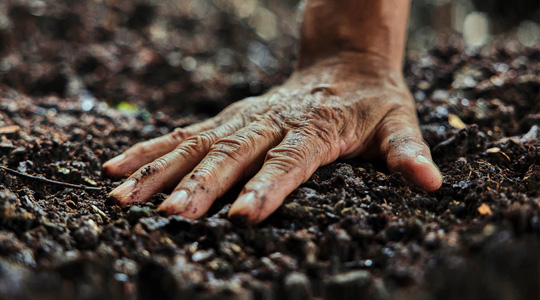Yara’s new project in Finland targets field emissions
A project has been launched in Finland to identify farming practices that generate the least possible emissions while maintaining the best possible yield. This is a concrete example of our commitment to cutting in-field emissions, through research and cooperation, as part of our ambition of Growing a Nature-Positive Food Future.
Beyond direct emissions
Yara has made significant steps in reducing its direct emissions. Yet, the challenge lies in addressing scope 3 emissions from fertilizer use- a notable contributor to our total greenhouse gas (GHG) account. This requires a holistic approach that addresses the emissions from the entire value chain, right down to the fields of farmers. Central to this goal is research that gathers precise in-field emission data and develops recommendations for climate-conscious farming practices.
The project
The project in Finland is a significant stride towards efforts to reduce scope 3 emissions from the use of Yara’s products. This effort involves gathering data on the environmental impact of farming practices and fertilizer application. Through this, we can pinpoint ways to minimize emissions, focusing on the precision of fertilizer application— in short, applying the right amount of fertilizer, at the right time.
The two-year project takes place in Yara’s Kotkaniemi research station in the south of Finland. Today, the station in Finland has 90 hectares in cultivation with 60 trials and 3000 trial plots. Here, tests are run on grass and spring wheat to measure how different farming practices and fertilizer applications affect greenhouse gas emissions from nitrogen use. The quantity and timing of greenhouse gas emissions is determined by measuring carbon dioxide, nitrous oxide, and methane emissions. In addition, the project also measures the effects on carbon flux.
“Based on the research results, the project will recommend measures for reducing greenhouse gas emissions from farming.”
Partnerships across the value chain
Collaboration is central to the success of this initiative and involves key partners, including HKScan, Fazer and the University of Helsinki and the technology and data analysis provider Datasense. Bringing together Yara’s agronomic expertise, with high technology, data analysis and the climate ambitions of companies in the Finnish food chain, the project can deliver recommendations for farmers to decrease their emissions, while maintaining high yields, based on the results of our research and that of our collaborators.
“HKScan’s target is to have a carbon-neutral food chain from farms to consumers by the end of 2040. This collaborative research provides invaluable information about the environmental impacts of fertilization,” says Aira Harju, development manager from HKScan.
“Fazer has set a climate target for reducing its greenhouse gas emissions. With the majority of our cereal products’ environmental impact originating in raw material production, we feel it is important to be involved in promoting related research,” says Kaisa Mattson, project manager from Fazer.
Towards a nature-positive food future
By leveraging science, technology and cooperative efforts, the project paves the way for evidence-based solutions that can protect the planet, support farmer prosperity, and drive us towards a Nature-Positive Food Future.
You might also be interested in:

Our ambition
Growing a Nature-Positive Food Future
Yara will contribute to a food system that protects nature, reduces emissions, and improves livelihoods.
Learn moreKnowledge grows Stories
Climate Action: Our road to 2030 and beyond
Yara has set targets across scopes 1, 2, and 3 to align our climate targets with the commitments of the Paris Agreement.
Read moreInvestor relations
Latest integrated report
Learn about our business model and strategy, how we create value and how we manage our performance – holistically.
Learn more






















































